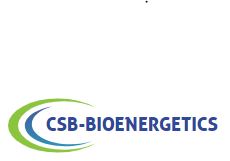Human IgG antibody Laboratories manufactures the rabbit antibody animal care protocol reagents distributed by Genprice. The Rabbit Antibody Animal Care Protocol reagent is RUO (Research Use Only) to test human serum or cell culture lab samples. To purchase these products, for the MSDS, Data Sheet, protocol, storage conditions/temperature or for the concentration, please contact rabbit Antibody. Other Rabbit products are available in stock. Specificity: Rabbit Category: Antibody Group: Animal Care
JBS True Blue |
|
MiTeGen |
300 µl |
EUR 16 |
|
Description: JBS True Blue |
Human True insulin ELISA kit |
|
BlueGene |
192 tests |
EUR 1524 |
|
|
|
Description: A competitive ELISA for quantitative measurement of Human True insulin in samples from blood, plasma, serum, cell culture supernatant and other biological fluids. This is a high quality ELISA kit developped for optimal performance with samples from the particular species. |
Human True insulin ELISA kit |
|
BlueGene |
1 plate of 48 wells |
EUR 624 |
|
|
|
Description: A competitive ELISA for quantitative measurement of Human True insulin in samples from blood, plasma, serum, cell culture supernatant and other biological fluids. This is a high quality ELISA kit developped for optimal performance with samples from the particular species. |
Human True insulin ELISA kit |
|
BlueGene |
1 plate of 96 wells |
EUR 822 |
|
|
|
Description: A competitive ELISA for quantitative measurement of Human True insulin in samples from blood, plasma, serum, cell culture supernatant and other biological fluids. This is a high quality ELISA kit developped for optimal performance with samples from the particular species. |
Animal Care information
Animal Tissue PCR Kit |
|
20-abx09801120ulSystems |
Abbexa |
-
Ask for price
-
Ask for price
|
- 100 rxns × 20 ul Systems
- 500 rxns × 20 ul Systems
|
|
|
Animal Tissue PCR Kit |
|
abx098011-100l |
Abbexa |
100 µl |
EUR 400 |
Animal Tissue PCR Kit |
|
abx098011-1ml |
Abbexa |
1 ml |
Ask for price |
Animal Tissue PCR Kit |
|
abx098011-200l |
Abbexa |
200 µl |
EUR 1050 |
LIF Recombinant Protein (Animal Free) |
|
40-745 |
ProSci |
5 ug |
EUR 323.7 |
|
Description: LIF is a pleiotrophic factor produced by multiple cell types, including T cells, myelomonocytic lineages, fibroblasts, liver, heart and melanoma. LIF promotes long-term maintenance of embryonic stem cells by suppressing spontaneous differentiation. Other activities include the stimulation of acute phase protein synthesis by hepatocytes, stimulation of differentiation of cholinergic nerves, and suppression of adipogenesis by inhibiting the lipoprotein lipase in adipocytes. While human LIF is active on mouse cells and is widely used in the maintenance of murine ESC to prevent spontaneous differentiation, mouse LIF is not active on human cells due to its inability to bind to the human LIF receptor. Recombinant Murine LIF is a 19.9 kDa protein containing 180 amino acids residues, including three disulfide bonds. |
LIF Recombinant Protein (Animal Free) |
|
40-750 |
ProSci |
5 ug |
EUR 323.7 |
|
Description: LIF is a pleiotrophic factor produced by multiple cell types, including T cells, myelomonocytic lineages, fibroblasts, liver, heart and melanoma. LIF promotes long-term maintenance of embryonic stem cells by suppressing spontaneous differentiation. Other activities include the stimulation of acute phase protein synthesis by hepatocytes, stimulation of differentiation of cholinergic nerves, and suppression of adipogenesis by inhibiting the lipoprotein lipase in adipocytes. While human LIF is active on mouse cells and is widely used in the maintenance of murine ESC to prevent spontaneous differentiation, mouse LIF is not active on human cells due to its inability to bind to the human LIF receptor. Recombinant Human LIF is a 19.7 kDa protein containing 180 amino acid residues, including three disulfide bonds. |
EGF Recombinant Protein (Animal Free) |
|
40-763 |
ProSci |
100 ug |
EUR 323.7 |
|
Description: EGF is a potent growth factor that stimulates the proliferation of various epidermal and epithelial cells. Additionally, EGF has been shown to inhibit gastric secretion, and to be involved in wound healing. EGF signals through a receptor known as c-erbB, which is a class I tyrosine kinase receptor. This receptor also binds with TGF-α and VGF (vaccinia virus growth factor). Recombinant Murine EGF is a 6.0 kDa globular protein containing 53 amino acid residues, including 3 intramolecular disulfide bonds. |
TPO Recombinant Protein (Animal Free) |
|
40-764 |
ProSci |
2 ug |
EUR 323.7 |
|
Description: TPO is a lineage-specific growth factor produced in the liver, kidney and skeletal muscle. It stimulates the proliferation and maturation of megakaryocytes, and promotes increased circulating levels of platelets in vivo. TPO signals through the c-mpl receptor, and acts as an important regulator of circulating platelets. Human and murine TPO exhibit cross-species reactivity. Recombinant Murine TPO is a fully biologically active 174 amino acid polypeptide (18.7 kDa), which contains the erythropoietin-like domain of the full length TPO protein. |
SCF Recombinant Protein (Animal Free) |
|
40-767 |
ProSci |
2 ug |
EUR 323.7 |
|
Description: SCF is a hematopoietic growth factor that exerts its activity by signaling through the c-Kit receptor. SCF and c-Kit are essential for the survival, proliferation and differentiation of hematopoietic cells committed to the melanocyte and germ cell lineages. Human SCF manifests low activity on murine cells, while murine and rat SCF are fully active on human cells. The human SCF gene encodes for a 273 amino acid transmembrane protein, which contains a 25 amino acid N-terminal signal sequence, a 189 amino acid extracellular domain, a 23 amino acid transmembrane domain, and a 36 amino acid cytoplasmic domain. The secreted soluble form of SCF is generated by proteolytic processing of the membrane anchored precursor. Recombinant Rat SCF is an 18.4 kDa polypeptide containing 165 amino acid residues, which corresponds to the sequence of the secreted soluble form of SCF. |
